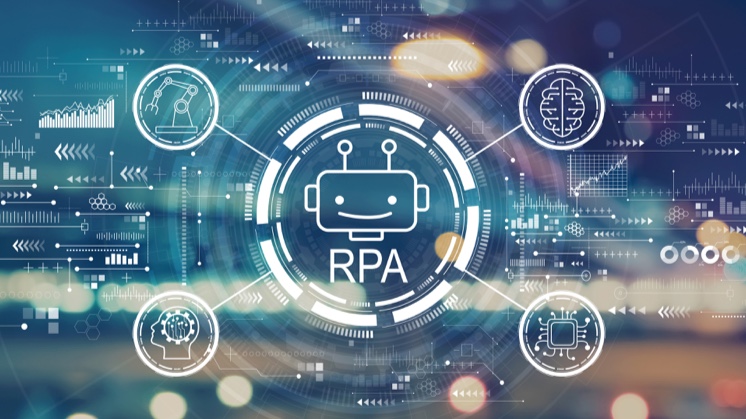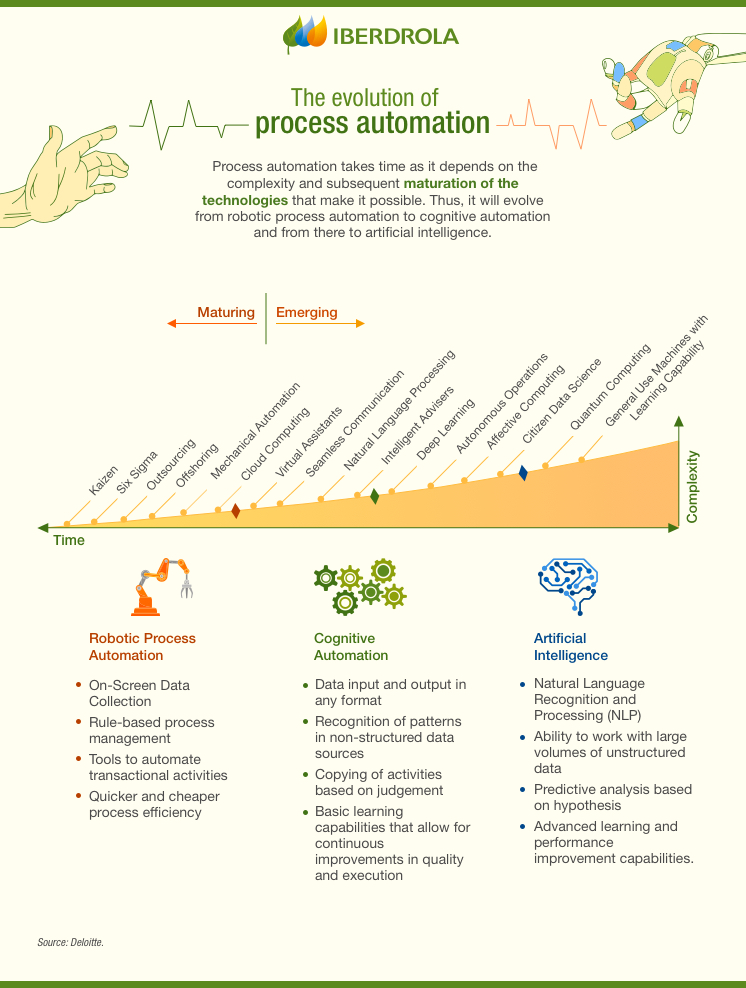RPA: Robotic Process Automation
Robotic process automation (RPA) in businesses and its impact on industry
Robotic Process Automation, or RPA, is transforming the way companies operate. RPA software robots communicate with systems and applications to speed up processes and reduce the workload on humans. Let's take a look at how it works and the benefits it provides.

There have been constant improvements in productivity over recent decades. Doing more complex tasks is getting quicker and cheaper, thanks to the digital transformation in general and the automation of processes in particular. Repetitive tasks that previously required the attention of one or more people can now be programmed into the company's IT systems and executed automatically.
What is RPA
When we talk about Robotic Process Automation (RPA) we mean a method of automating transactional processes based on specific rules. Let's picture an employee using accounting software, CRM (Customer Relationship Management), ERP (Enterprise Resource Planning), or any other business application software and ask ourselves, could their work be automated? RPA says it could, at least the most mechanical tasks.
"RPA is the next logical step towards considerably reducing the need for employees to do high-volume rules-based tasks"
Forrester Consulting
Traditional automation only executes predefined instructions, which limits the scope of tasks that can be automated by it. RPA will change all that and will be a fundamental component of hyperautomation. Combined with Artificial Intelligence, Machine Learning and Big Data, in the very near future robots will learn from existing processes, which will allow them to solve problems as they arise.
Automation and robotics
Automation should not be confused with robotisation. Knowing the differences between the two is important when it comes to applying the most efficient of the two technologies. Process automation offers reliability and excellent productivity when working in structured environments, whereas robotisation has the advantage of autonomous decision-making, meaning that it can work in more changeable situations.

SEE INFOGRAPHIC: The evolution of process automation [PDF] External link, opens in new window.
How RPA works and its integration into companies
The implementation of RPA into an organisation requires both the technology and the organisational structure. Below, we review some of the key issues:
- Process developers identify the tasks to be handled by the RPA.
- A system, called robot manager, assigns and monitors the identified tasks.
- IT applications are the platforms through which robots and users interact.
- Robots, or software programs, interact with enterprise applications.
- Users interact with applications and resolve incidents highlighted by the robots.
Which areas does RPA apply to? In other words, which processes can be, or tend to be, automated nowadays? We review some of them: sales operations, purchasing operations, mediation and communication with suppliers, reconciliation of accounting records and bank statements, comparison of supply prices, payroll, report generation, customer service, etc. Therefore, RPA affects most sectors of industry: finance and banking, energy, insurance, healthcare, manufacturing, logistics, technology and telecommunications, among others.
RPA tools
RPA tools are software applications through which users can configure which tasks are to be automated by "bots". Although some of these applications require a level of programming knowledge, others can use natural language or simple user interfaces. Generally speaking, they should offer the following features:
 Security
Security
Manage user credentials, provide encryption and access controls.
 Compatibility
Compatibility
The ability to interact with most of the world's business applications.
 Scalability
Scalability
Adaptability to handle an increasing number of applications and tasks.
 Usability
Usability
The graphical interface must be easy to use for both programmers and non-programmers.
The application of RPA is complementary to other technologies that form part of the Fourth Industrial Revolution, including: Big Data, Artificial Intelligence, Machine Learning, the Internet of things, Chatbots, Digital twins, Cobots, etc.
Advantages of RPA
According to the consulting firm Deloitte, RPA provides the following benefits to companies:
- It enables accurate 24x7 execution of tasks, allowing you to optimise processes, improve quality, reduce delivery times and even better manage peak demand.
- It can free employees from repetitive tasks to develop new skills and higher-added-value projects.
- It facilitates the insourcing (internalisation) of processes previously outsourced to providers, enabling the recovery of control.
- It facilitates task monitoring and auditing, as well as eliminating possible data inconsistencies.
- It improves profitability by having a high and short-term payback, as it generally does not involve high integration costs.




